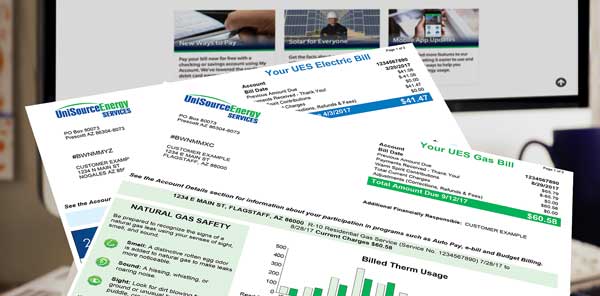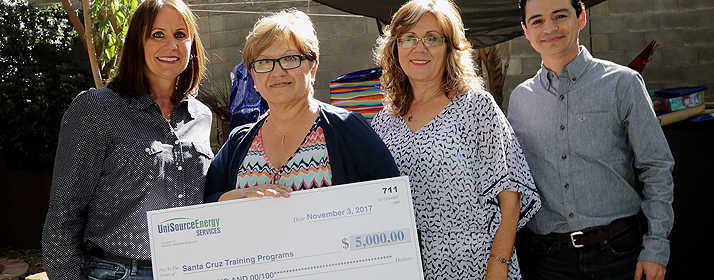
UniSource Energy Services is beginning to display demand data for information only on electric bills to further educate customers about their energy usage patterns.
For residential customers, demand represents their highest hourly usage during on-peak hours, in kilowatts (kW). Two of our pricing plans – Peak Demand and Demand Time-of-Use – pair a “demand” charge with lower usage-based rates, giving customers the ability to lower their bills by managing their demand during on-peak time periods.
Customers on demand-based plans already see their demand on their bills. But UES is now providing demand details on other customers’ bills for their education. The information will make them more aware of how they use energy and help them select the pricing plan that is right for them.
UES’ service costs are driven by the need to satisfy customers’ highest demand for energy, even if it only occurs once. When that maximum usage level goes down, so does the cost of providing all of our customers with safe, reliable service.
“Lowering demand is a win-win for everyone involved,” said Denise Smith, Director of Customer Service & Programs. “Our service costs go down, and our customers also can save money.”
In order for informational demand to display, a virtual meter exchange must take place. This will happen gradually over the course of several months for residential and small commercial customers.
After the change occurs, informational demand will appear in the last line of the Billing Period Comparison table. On-peak and off-peak demand readings also will display on page two of the bill under the Usage Information section, along with on- and off-peak usage information in kilowatt-hours (kWh).
Customers already can access their demand information through My Energy Usage in My Account and in the mobile app.
To lower their demand, customers should “level out their load” by avoiding the simultaneous use of air conditioning, pool pumps, washing machines, dishwashers and other large appliances during on-peak hours. A programmable thermostat and timers can help space out the use of those appliances.
Shifting electric usage to off-peak hours also can help lower demand. This can be done by:
- Adjusting the thermostat to reduce AC use during on-peak hours or when no one is home.
- Turning off all but essential lights during on-peak hours.
- Using large, non-essential appliances such as the washing machine, electric dryer, dishwasher and pool pump only during off-peak hours.
- Charging an electric vehicle only during off-peak hours.
“It takes some planning, but lowering your demand can be relatively simple,” Smith said. “The more our customers know, the more control they will have over their energy costs.”






